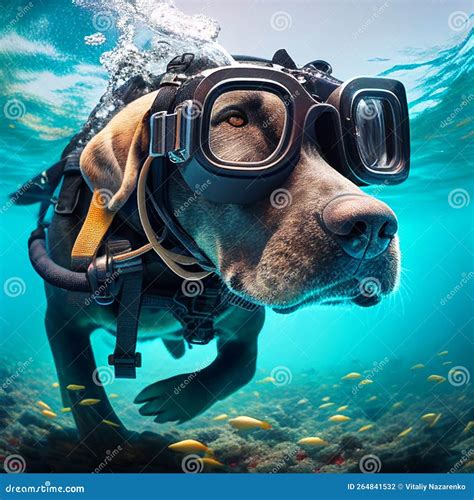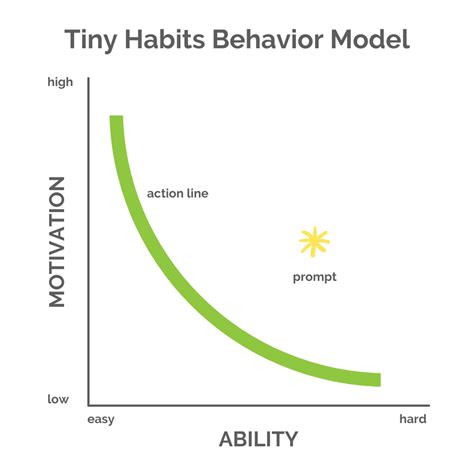
A litter of black Labrador puppies at Guiding Eyes for the Blind recently experienced their first exposure to water, resulting in an outpouring of online adoration. The non-profit organization, which trains guide dogs for the visually impaired, shared a video of the puppies’ initial swimming lessons, showcasing their tentative yet endearing interactions with a shallow pool. The video has quickly gone viral, capturing hearts and highlighting the early stages of these future guide dogs’ crucial training.
The viral video, posted on Guiding Eyes for the Blind’s social media channels, depicts the young Labrador Retrievers cautiously entering a small, enclosed pool under the watchful eyes of trainers. While some pups bravely plunged in, others were more hesitant, requiring gentle encouragement to take the plunge. The heartwarming footage shows the puppies paddling around, exploring their new aquatic environment, and generally exhibiting an abundance of playful curiosity. The organization utilizes these early water introductions as a form of socialization and confidence-building, essential components of their rigorous guide dog training program.
“Water introduction is a critical part of our puppy raising program,” explained a representative from Guiding Eyes for the Blind. “It helps the puppies become comfortable and confident in different environments, which is essential for their future roles as guide dogs.” The organization emphasizes that early exposure to various stimuli, including water, loud noises, and different terrains, is vital in preparing the puppies for the diverse challenges they will face while assisting their visually impaired handlers.
Guiding Eyes for the Blind, headquartered in Yorktown Heights, New York, has been providing guide dogs to people with vision loss for over 60 years. The organization breeds, raises, and trains Labrador Retrievers, German Shepherds, and Golden Retrievers, carefully selecting dogs with the temperament and intelligence suited for guide work. The training program is comprehensive, typically spanning two years, and includes socialization, obedience training, and advanced skills training, such as navigating urban environments, avoiding obstacles, and responding to specific commands.
The puppies featured in the viral video are currently in the early stages of their training journey. They are being raised by volunteer puppy raisers who provide them with a loving home environment and introduce them to various social situations. Puppy raisers play a crucial role in the development of future guide dogs, teaching them basic obedience, exposing them to different environments, and providing them with the socialization they need to become well-adjusted and confident companions.
The organization relies heavily on donations and volunteers to support its mission. The cost of breeding, raising, and training a single guide dog is substantial, and Guiding Eyes for the Blind provides these services free of charge to individuals who are blind or visually impaired. The viral video has not only brought joy to countless viewers but has also raised awareness about the organization’s important work and the dedication of its staff and volunteers.
The positive response to the video underscores the public’s fascination with animals, particularly puppies, and the inherent appeal of seeing these young dogs embark on their journey to becoming guide dogs. The video’s success also highlights the power of social media in raising awareness for non-profit organizations and their missions. Guiding Eyes for the Blind hopes that the video will inspire more people to support their work, whether through donations, volunteering, or simply spreading awareness about the organization’s services.
The puppies will continue to undergo extensive training over the next two years, gradually progressing from basic obedience to more advanced skills. They will be carefully monitored and evaluated to ensure they possess the necessary temperament and aptitude for guide work. Not all puppies will successfully complete the program, but those who do will go on to provide invaluable assistance and companionship to individuals with vision loss, empowering them to live more independent and fulfilling lives.
The heartwarming video of the Labrador puppies’ first swim serves as a reminder of the dedication and compassion that goes into training these remarkable animals. It also provides a glimpse into the early stages of a journey that will ultimately transform the lives of both the dogs and the people they will serve. The viral video is not just a collection of cute puppy moments; it is a testament to the power of human-animal partnerships and the incredible potential of these future guide dogs. The visual spectacle, combined with the knowledge of their future important jobs, resonated with millions.
The Guiding Eyes for the Blind’s method of introducing puppies to water is gradual and positive. The water is typically lukewarm, and the puppies are never forced to enter. Trainers use positive reinforcement, such as treats and praise, to encourage the puppies and make the experience enjoyable. This approach helps to build the puppies’ confidence and ensures that they associate water with positive experiences. The early introduction to water also helps the puppies develop their swimming skills, which can be beneficial in various situations throughout their lives.
The selection process for guide dog candidates is rigorous, beginning with careful breeding practices designed to produce dogs with the desired traits. Temperament is a key factor, as guide dogs must be calm, confident, and able to handle stressful situations. Intelligence and trainability are also essential, as guide dogs must be able to learn and respond to a wide range of commands. Physical health is also carefully considered, as guide dogs must be able to perform their duties without pain or discomfort. The process continues with careful monitoring and evaluation throughout the puppies’ training, ensuring that only the most suitable dogs are selected for guide work.
The organization also emphasizes the importance of responsible breeding practices, ensuring the health and well-being of both the parent dogs and the puppies. They carefully screen their breeding dogs for genetic health conditions and provide them with optimal care throughout their lives. This commitment to responsible breeding practices helps to ensure that the puppies are healthy and have the best possible chance of success in their training.
Beyond the initial water introduction, the puppies will be exposed to a wide range of environments and experiences, including busy streets, public transportation, and crowded stores. This socialization process is designed to help them become comfortable and confident in any situation they may encounter while working as guide dogs. They will also learn to ignore distractions, such as other animals and loud noises, and to focus on their handlers’ needs.
The training program at Guiding Eyes for the Blind is constantly evolving, incorporating the latest research and best practices in animal behavior and training. The organization’s trainers are highly skilled and experienced, and they are committed to providing the puppies with the best possible training. They work closely with the puppy raisers to ensure that the puppies are receiving consistent training and care, and they provide ongoing support and guidance to the puppy raisers throughout the program.
The impact of guide dogs on the lives of people with vision loss is profound. Guide dogs provide not only mobility assistance but also companionship, emotional support, and a sense of independence. They allow people with vision loss to navigate the world with greater confidence and safety, enabling them to participate more fully in their communities. The bond between a guide dog and its handler is often very strong, and the dog becomes an integral part of the handler’s life.
Guiding Eyes for the Blind also provides extensive support to its graduates, offering ongoing training and assistance to ensure that the guide dog teams are successful. They also provide access to a network of other guide dog users, allowing graduates to share their experiences and support one another. This comprehensive support system helps to ensure that the guide dog teams are able to thrive and that the graduates are able to live fulfilling and independent lives.
The success of Guiding Eyes for the Blind is a testament to the dedication and passion of its staff, volunteers, and supporters. The organization’s commitment to providing high-quality guide dogs to people with vision loss has transformed countless lives and has made a significant contribution to the community. The viral video of the puppies’ first swim is just a small glimpse into the incredible work that they do, and it serves as a reminder of the importance of supporting their mission.
The organization accepts applications from individuals who are blind or visually impaired and are seeking a guide dog. The application process is thorough, and applicants are carefully evaluated to ensure that they are a good fit for a guide dog. The organization also provides training to its graduates, teaching them how to work effectively with their guide dogs and how to care for them properly.
The guide dogs trained by Guiding Eyes for the Blind are not only highly skilled but also incredibly well-behaved. They are trained to be calm and focused in a variety of environments, and they are able to ignore distractions and focus on their handlers’ needs. They are also trained to be gentle and affectionate, providing their handlers with companionship and emotional support.
The organization also works to raise awareness about the importance of guide dogs and the rights of people with vision loss. They advocate for policies that protect the rights of guide dog users and ensure that they have equal access to public places and services. They also work to educate the public about the proper etiquette for interacting with guide dogs and their handlers.
Guiding Eyes for the Blind is a leading provider of guide dogs for people with vision loss, and their commitment to excellence is evident in every aspect of their work. The viral video of the puppies’ first swim is a heartwarming reminder of the dedication and compassion that goes into training these remarkable animals, and it serves as an inspiration to support their important mission. The organization continues to innovate and improve its training methods, ensuring that its guide dogs are the best in the world. Their rigorous standards and focus on the well-being of both the dogs and the recipients has allowed them to thrive and help those in need.
The impact of the internet cannot be understated, the virality of the puppy swimming video is not just about “cuteness”. It is a powerful vehicle for awareness. It allows Guiding Eyes for the Blind to connect with a global audience, sharing its mission and showcasing the transformative power of guide dogs. This increased visibility can lead to increased donations, volunteer applications, and ultimately, more guide dogs being placed with individuals who need them. Social media amplifies their message and strengthens their community of supporters.
The dedication extends beyond the initial training phase. Guiding Eyes for the Blind maintains lifelong relationships with its guide dog teams, offering ongoing support and resources. This commitment ensures that the teams are successful and that the guide dogs continue to provide invaluable assistance throughout their working lives. They are readily available to address any challenges that may arise and provide guidance on everything from health and wellness to advanced training techniques. This holistic approach underscores their dedication to the well-being of both the dogs and their handlers.
Furthermore, the program emphasizes the importance of matching the right dog with the right individual. The personalities, lifestyles, and needs of both the handler and the dog are carefully considered to ensure a successful and harmonious partnership. This personalized approach maximizes the potential for a strong bond and a positive working relationship. They aim to create partnerships that are built on trust, communication, and mutual respect.
The success of Guiding Eyes for the Blind also relies on the generosity of the community. Donations from individuals, corporations, and foundations are essential to funding their programs and providing guide dogs free of charge to those who need them. These donations support every aspect of their operations, from breeding and raising the puppies to training and providing ongoing support to guide dog teams. Their dependence on charity underscores the importance of raising awareness and fostering a culture of giving.
The impact is not just on the individuals who receive the guide dogs but also on their families and communities. Guide dogs empower people with vision loss to participate more fully in their communities, contributing their talents and skills to the workforce, volunteer organizations, and other civic activities. This increased participation strengthens communities and fosters a more inclusive society. Their contributions extend far beyond the individual level.
The organization is committed to diversity and inclusion, ensuring that its services are accessible to all individuals who are blind or visually impaired, regardless of their race, ethnicity, gender, sexual orientation, or socioeconomic status. They believe that everyone deserves the opportunity to live a fulfilling and independent life, and they are dedicated to removing barriers that prevent people with vision loss from achieving their goals. This commitment to inclusivity strengthens their mission and ensures that their services reach the people who need them most.
The viral video of the puppies’ first swim has served as a powerful reminder of the importance of their work and the transformative impact of guide dogs. It has also inspired countless individuals to support their mission, whether through donations, volunteering, or simply spreading awareness about their services.
The organization’s commitment to research and innovation ensures that they remain at the forefront of the guide dog industry. They are constantly exploring new technologies and training techniques to improve the effectiveness of their programs and enhance the lives of the people they serve. Their dedication to research and innovation reflects their commitment to excellence and their desire to provide the best possible service to the community. The emphasis on improvement is a testament to the longevity of the organization and their commitment to help those in need.
The viral phenomenon underscores the broader societal fascination with animals and their ability to connect with humans on an emotional level. The puppies’ innocence and playful nature resonate with viewers, reminding them of the simple joys in life. This emotional connection translates into increased awareness and support for Guiding Eyes for the Blind, highlighting the power of animals to inspire compassion and generosity.
The dedication of the puppy raisers is another key factor in the success of Guiding Eyes for the Blind. These volunteers open their homes and hearts to the puppies, providing them with the love, care, and socialization they need to thrive. Their commitment is essential to the development of well-adjusted and confident guide dogs. They provide a foundation for the puppies to be successful guide dogs.
The impact of the video goes beyond just immediate donations and attention. It serves as a long-term branding exercise for Guiding Eyes for the Blind, increasing its name recognition and solidifying its reputation as a leading provider of guide dogs. This enhanced brand awareness can lead to sustained support and a greater ability to fulfill its mission in the years to come.
FAQ:
-
What is Guiding Eyes for the Blind? Guiding Eyes for the Blind is a non-profit organization that trains and provides guide dogs to people with vision loss, free of charge. The organization has been operating for over 60 years, breeding, raising, and training Labrador Retrievers, German Shepherds, and Golden Retrievers.
-
What was shown in the viral video featuring the Labrador puppies? The viral video showcased a litter of black Labrador puppies experiencing their first introduction to water in a controlled and safe environment. The video depicted the puppies cautiously entering a shallow pool, some eagerly and others hesitantly, under the supervision of trainers from Guiding Eyes for the Blind. The video was shared on the organization’s social media platforms.
-
Why is early water introduction important for guide dog puppies? Early water introduction is considered a crucial part of the puppy raising program at Guiding Eyes for the Blind. It helps the puppies become comfortable and confident in different environments, building their resilience and adaptability, essential qualities for future guide dogs who will encounter various situations. Exposure to different stimuli such as water, noises, and terrains prepares them for the challenges they will face while assisting their visually impaired handlers. According to the organization, “It helps the puppies become comfortable and confident in different environments, which is essential for their future roles as guide dogs.”
-
How can I support Guiding Eyes for the Blind? There are several ways to support Guiding Eyes for the Blind. You can make a donation to help fund their breeding, raising, and training programs. You can also volunteer your time as a puppy raiser, providing a loving home environment and socialization for a future guide dog. Additionally, you can spread awareness about the organization’s mission by sharing information and videos on social media.
-
What happens to the puppies after their initial training and socialization? After their initial training and socialization with volunteer puppy raisers, the puppies undergo advanced skills training for approximately two years. They are carefully monitored and evaluated throughout the program to determine if they possess the necessary temperament and aptitude for guide work. Those who successfully complete the program are matched with individuals who are blind or visually impaired, providing them with mobility assistance, companionship, and a greater sense of independence. Those who do not make it through the training for guide work are often offered for adoption to loving homes.









